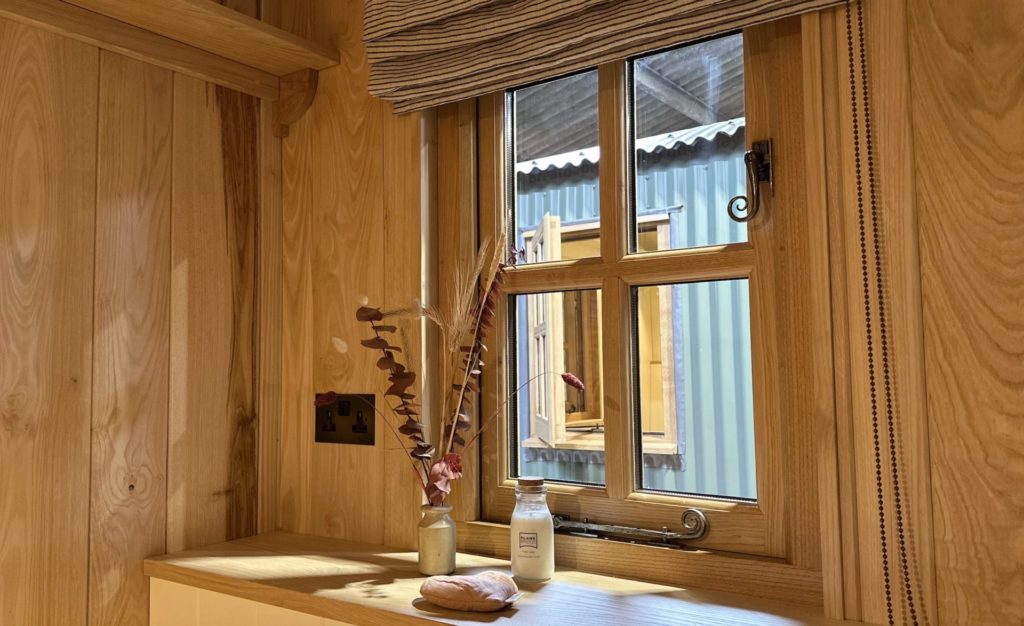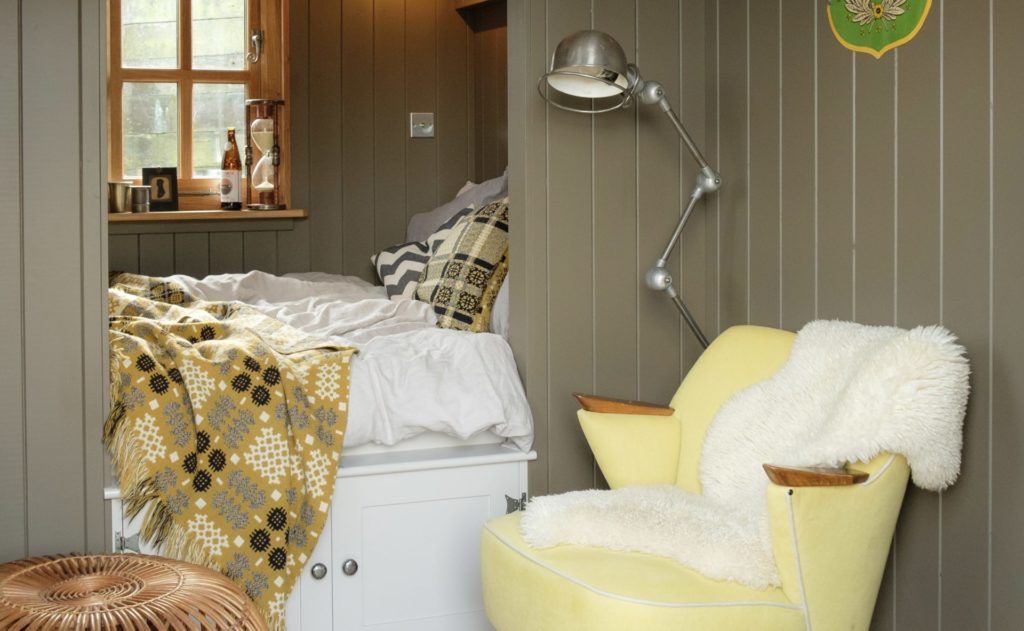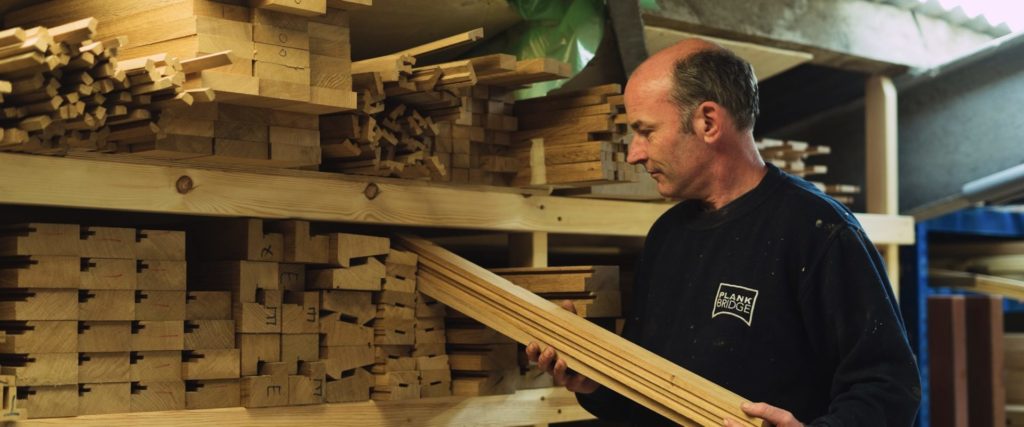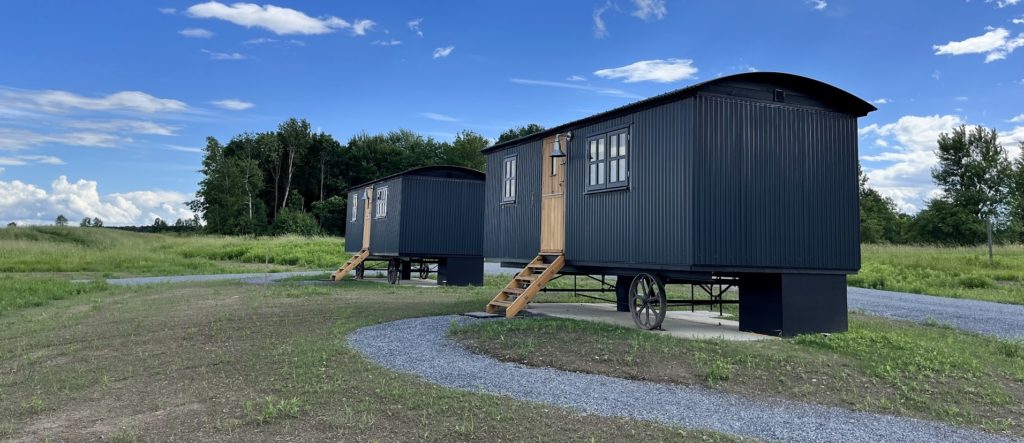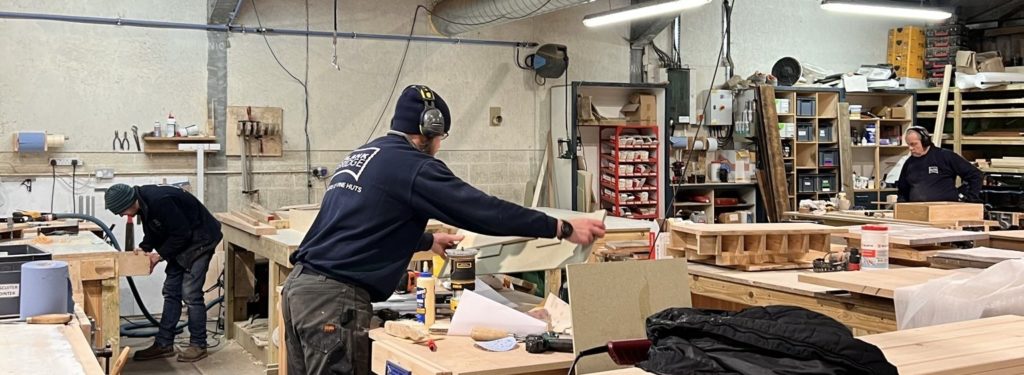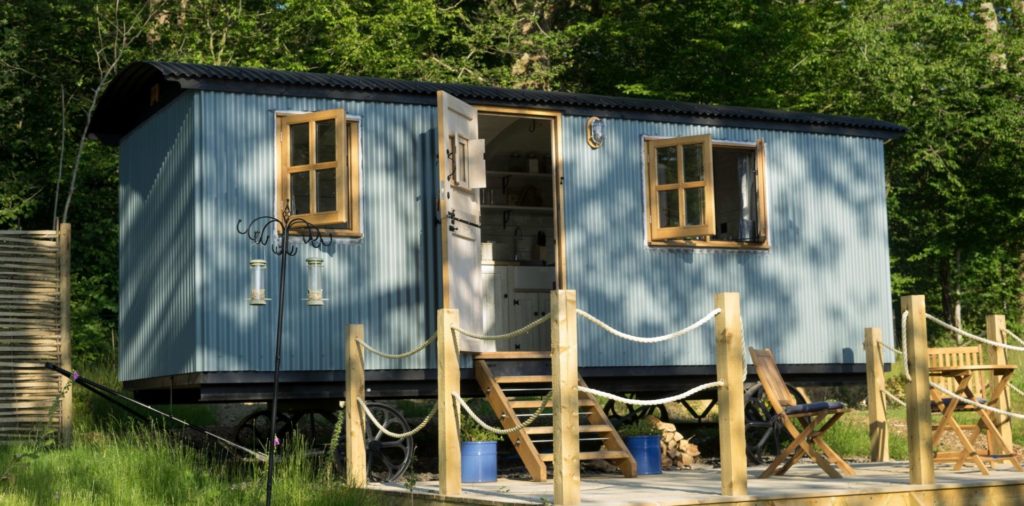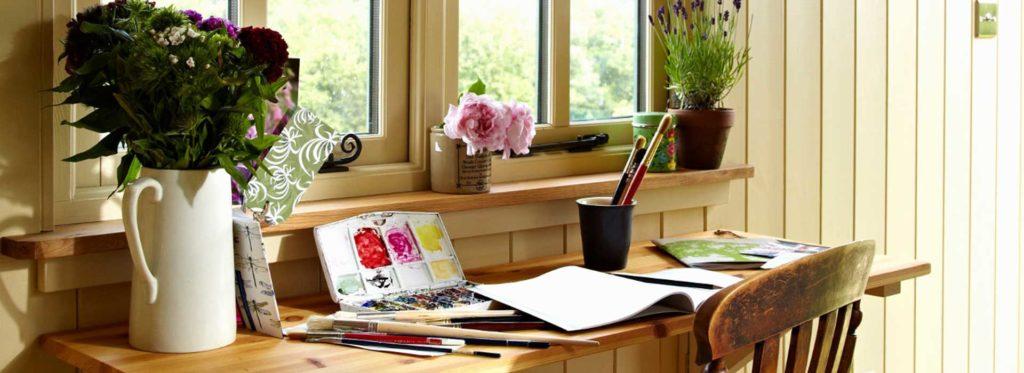Here’s a subject which doesn’t get thought about much in general life, but one which we actually get asked about a lot.
I remember the thrill of putting a toilet into a shepherd’s hut back in 2007 or so, in the early days of Plankbridge when it seemed like a crazy idea. We hadn’t made many shepherd’s huts then, just a handful as the business was about to take off around that time. An early adopter asked for a plumbed in loo.
A partition wall is simple enough, with either a sliding barn door on tracks, ora hinged ledge and brace door. The first incarnation simply had a toilet and wash basin, with no shower. That was to come later, and has since evolved in to the complete shower room familiar in our shepherd’s huts today. I favoured a high level cistern back then, the ones where the cistern holding the flushing water is mounted high on the wall, the flush pipe running vertically down to the back of the pan. There’s some very nice examples of these, from brands such as Burlington and Thomas Crapper, a Victorian brand which has existed since 1861. A high level cistern often uses a chain, a period detail, but some these days use a rod to flush, which does a half and full flush.
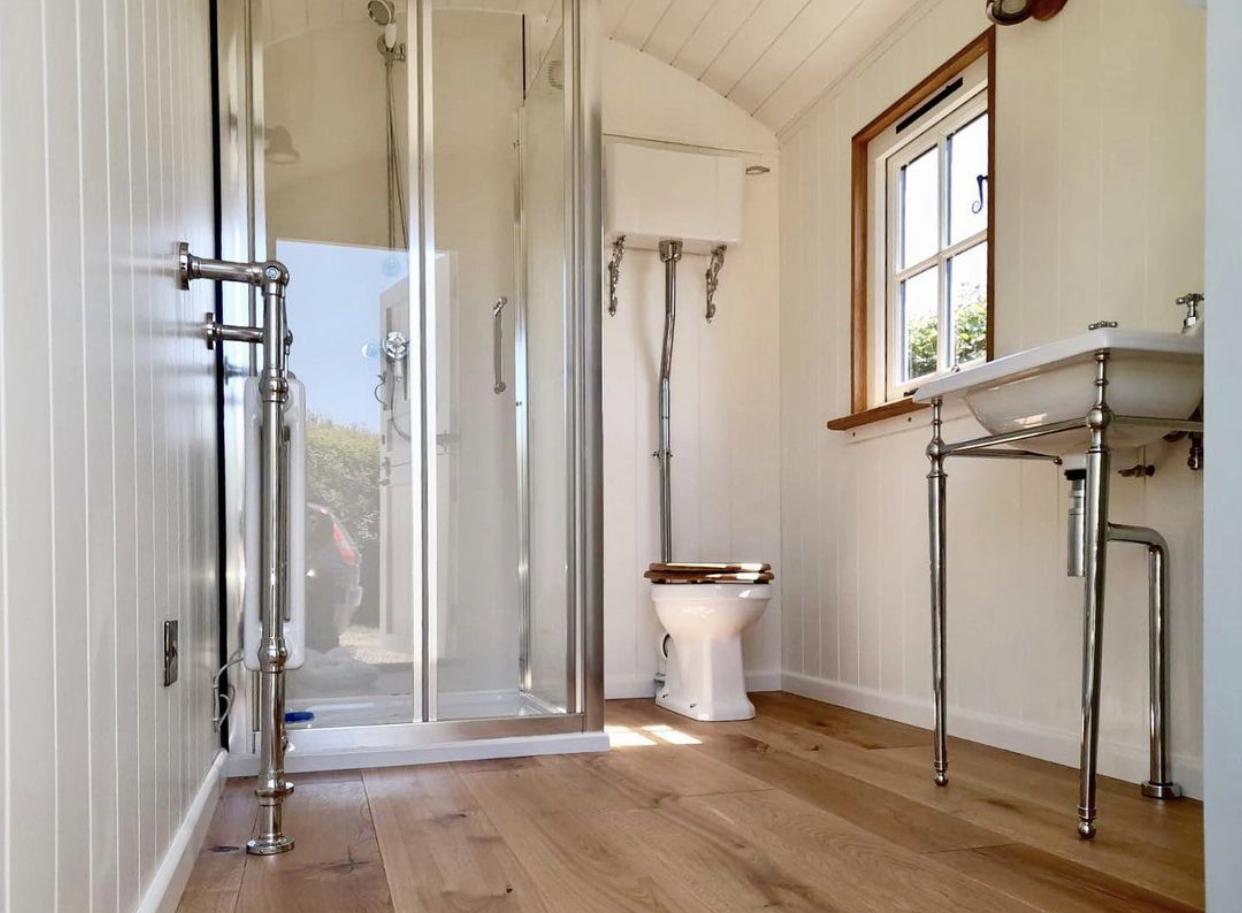
A close-coupled toilet, where the pan and cistern are joined, arguably fits a small shepherd’s hut space better, as the wall above is available for other things.
One feature that is worth considering is the addition of a durgo, or ‘air admittance valve’. When a toilet is flushed in a shepherd’s hut, there is a change in pressure in the waste pipework, as the flow of a volume of water and waste drags air into the system from somewhere. It’s mostly OK without one, it’s not got the burden of an entire house on the soil pipes, and air would bed ragged into the overflow of the basin, and around the trap and into the pipes. But, if you find you have problems with smells emanating from the pipes, the addition of a durgo on your system may solve that.
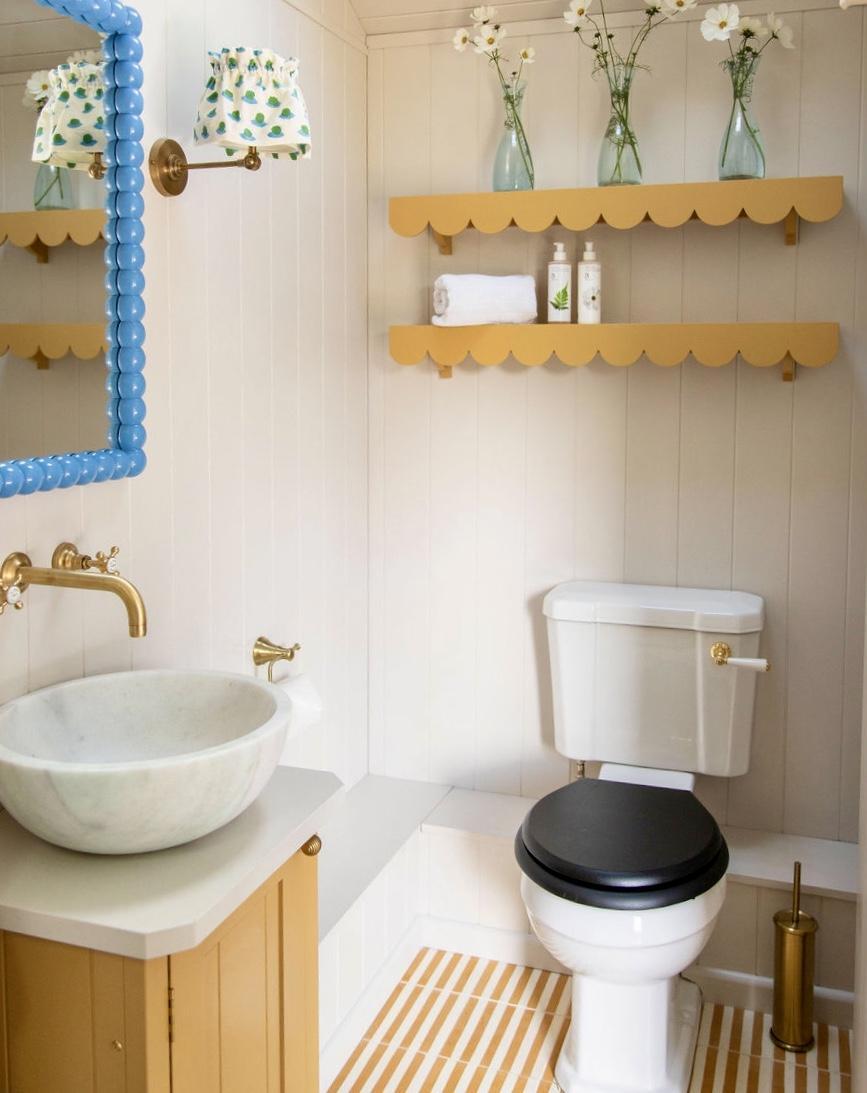
Your shepherd’s hut will arrive with a waste pipe through the sub floor ready for your plumber to connect to the drains, and an alcathene water pipe feed in.
A shepherd’s hut is often positioned in a garden where there is likely to be some kind of system to cope with the waste from the house. Either a connection to the main drains (look for cast iron drain covers which are usually positioned wherever the drains change direction underground) or connection to the old septic tank (primitive treatment system), cesspit (that needs regular pumping out) or the more modern small treatment plant. If you are setting up close to a water course, it will be a requirement of planning permission that waste management is properly considered so as not to pollute the waterway. It’s so regrettable that the post- brexit relaxation of environmental laws by the UK Government seems to have allowed increased pollution of the rivers and seas by the water companies. It’s so important that a new glamping enterprise doesn’t make things worse.
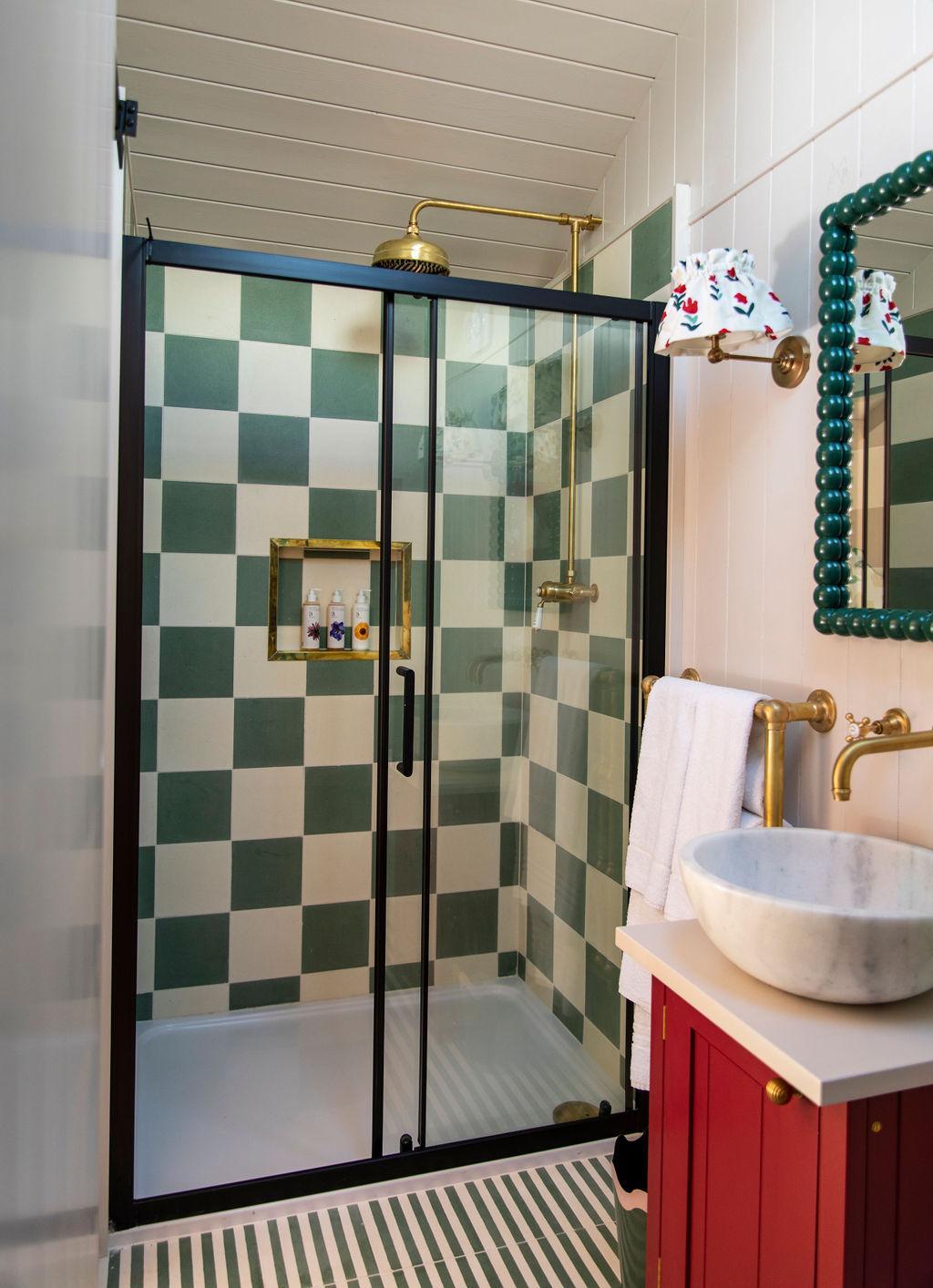
Above all with these things, take advice from a trusted ground worker – its bread and butter to them, and they will usually soon be able to come up with a solution. Even the incorrect fall of the pipes can be overcome with the addition of a smallholding chamber which contains a sewage pump, which kicks in from time to time and empties to a higher drain position. Don’t forget you will need a water supply in, as well as a waste pipe out. Whilst they are on site they can trench in the electric supply and data cables if required.
It’s always worth considering the layout of your shepherd’s hut, and the toilet noises that may emanate from within. It’s best not to position the toilet too close to the bed for example, our most popular layout designs have the toilet at the opposite end of the shepherd’s hut to the bed.
If the addition of such services to the shepherd’s hut isn’t possible you can fit a cassette type toilet, familiar in a caravan, motor home or boat. Some have a small tank of water to flush, or are connected to a water feed. Most simply have a hatch which drops into the chamber below. These have a cassette which needs emptying from time to time.
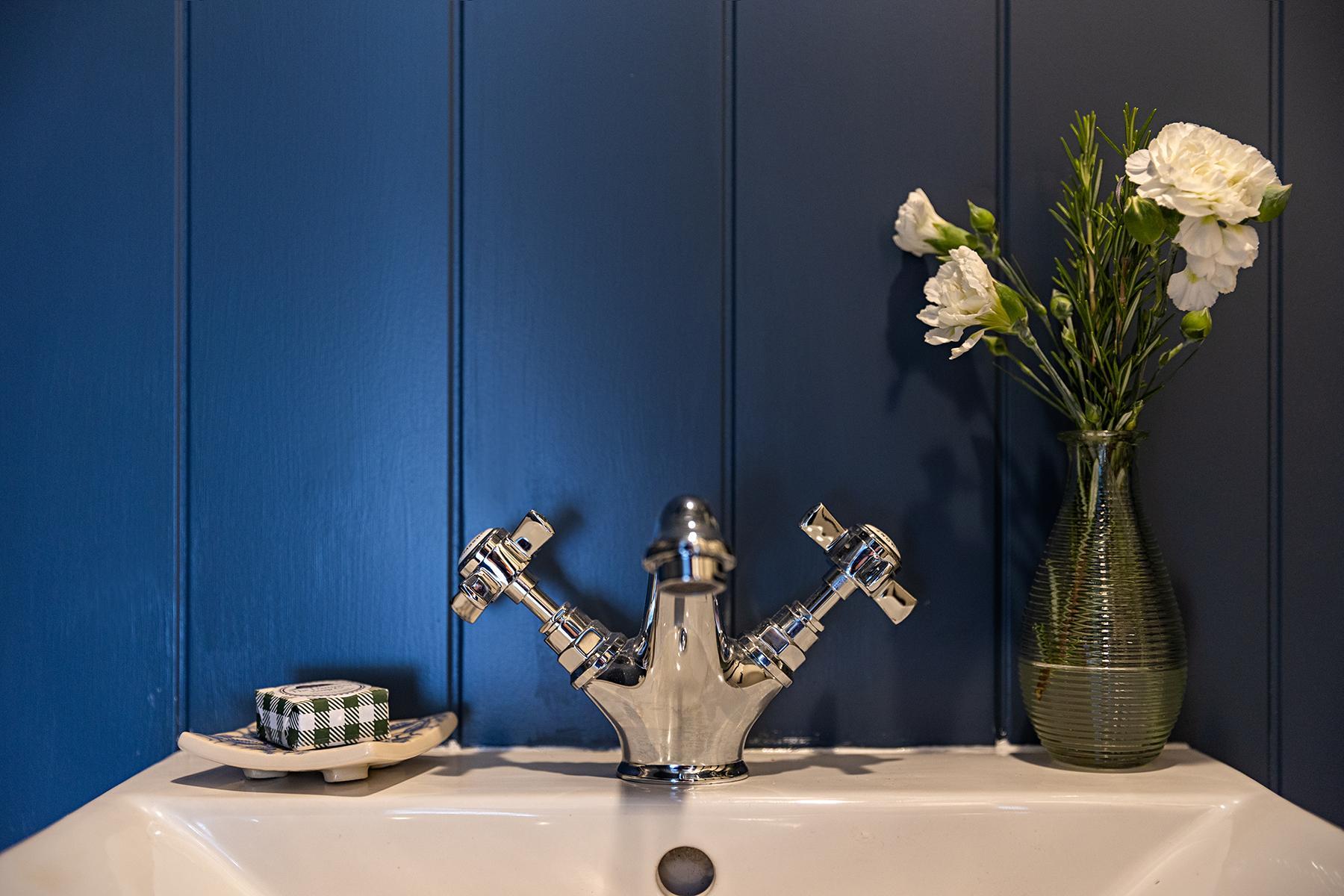
We also occasionally fit composting loos, a modern clever version called a Separett. They work well, but rely on everyone sitting down, the solids composting inside, and the urine exiting the hut via a pipe to a gravel soakaway, a grey water tank (which will need emptying) or allowed to soak into a bale of barley straw. This begins to compost and makes an excellent addition to the garden. The application of some dry matter like sawdust, or cocoa shells, after each ‘go’ helps to reduce the smells.
The Centre for Alternative Technology in Machynlleth in Wales is a great source of information on off-grid solutions from composting toilet design through to off-grid energy such as solar panels and wind turbines.
Much like the old Nightsoil men, who went around collecting human excreta after dark from back garden privies, the contents of your composting loo will end up making an excellent addition to your runner bean trench.

